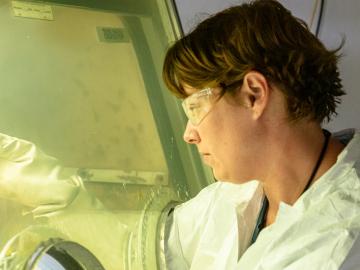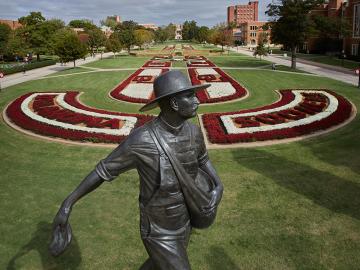Filter News
Area of Research
- (-) Isotopes (12)
- (-) Materials for Computing (18)
- Advanced Manufacturing (10)
- Biological Systems (3)
- Biology and Environment (37)
- Biology and Soft Matter (1)
- Building Technologies (3)
- Chemical and Engineering Materials (2)
- Chemistry and Physics at Interfaces (6)
- Clean Energy (110)
- Computational Biology (1)
- Computational Chemistry (1)
- Computational Engineering (2)
- Computer Science (4)
- Electricity and Smart Grid (1)
- Energy Frontier Research Centers (7)
- Functional Materials for Energy (6)
- Fusion and Fission (14)
- Fusion Energy (2)
- Geographic Information Science and Technology (2)
- Isotope Development and Production (1)
- Materials (54)
- Materials Synthesis from Atoms to Systems (5)
- Materials Under Extremes (6)
- Mathematics (1)
- National Security (7)
- Neutron Data Analysis and Visualization (2)
- Neutron Science (26)
- Nuclear Science and Technology (7)
- Quantum Condensed Matter (2)
- Quantum information Science (3)
- Reactor Technology (1)
- Sensors and Controls (1)
- Supercomputing (41)
- Transportation Systems (3)
News Topics
- 3-D Printing/Advanced Manufacturing (2)
- Biomedical (2)
- Chemical Sciences (4)
- Composites (1)
- Computer Science (3)
- Coronavirus (2)
- Energy Storage (1)
- Isotopes (11)
- Materials (7)
- Materials Science (10)
- Microscopy (3)
- Nanotechnology (4)
- National Security (2)
- Neutron Science (4)
- Polymers (4)
- Quantum Computing (1)
- Quantum Science (2)
- Space Exploration (2)
- Sustainable Energy (2)
- Transportation (2)
Media Contacts

It’s elemental — scientists agree that the periodic table is incomplete. And when it comes to unveiling parts of the periodic table yet undiscovered, ORNL is doing some heavy lifting.

A discovery by Oak Ridge National Laboratory researchers may aid the design of materials that better manage heat.

In experiment after experiment, the synthetic radioisotope actinium-225 has shown promise for targeting and attacking certain types of cancer cells.

Researchers at ORNL designed a novel polymer to bind and strengthen silica sand for binder jet additive manufacturing, a 3D-printing method used by industries for prototyping and part production.

A team led by the U.S. Department of Energy’s Oak Ridge National Laboratory demonstrated the viability of a “quantum entanglement witness” capable of proving the presence of entanglement between magnetic particles, or spins, in a quantum material.

ORNL and the University of Oklahoma, known as OU, recently executed a memorandum of understanding to officially recognize their partnership in pursuing shared research and development goals.

Analytical chemists at ORNL have developed a rapid way to measure isotopic ratios of uranium and plutonium collected on environmental swipes, which could help International Atomic Energy Agency analysts detect the presence of undeclared nuclear

A 25-year career with the U.S. Navy, commanding combat missions overseas, brought Tom Kollie back to where he came from — ready to serve his country in a new way.

Pengfei Cao, a polymer chemist at ORNL, has been chosen to receive a 2021 Young Investigator Award from the Polymeric Materials: Science and Engineering Division of the American Chemical Society, or ACS PMSE.

As a medical isotope, thorium-228 has a lot of potential — and Oak Ridge National Laboratory produces a lot.




